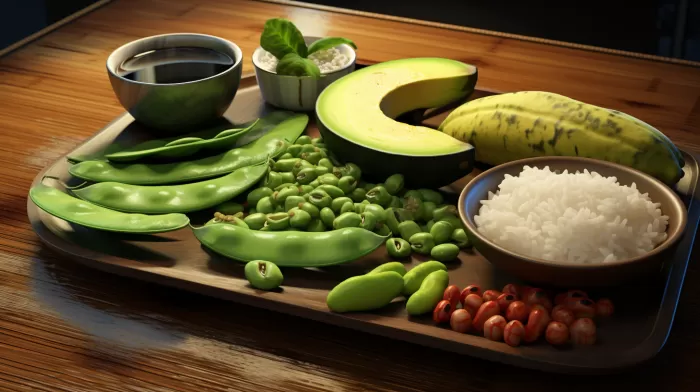Colon cancer is a major health issue affecting millions of people around the world, but there’s a substance that may help lower your risk called “resistant” starch. This unique starch can be found in particular foods and must be consumed just right to unlock its cancer-fighting benefits.
Resistant Starch: The Key Ingredient
Resistant starch is a carbohydrate that isn’t digested in the small intestine. Instead, it goes directly to the colon where it ferments and produces beneficial short-chain fatty acids. These fatty acids include butyrate, which has been linked to cancer-fighting properties, particularly in the colon.
The key thing about resistant starch is that your body cannot effectively break it down, but the good bacteria in your gut love it! As it reaches your colon, these probiotic bacteria go to work on the starch, providing your body with a host of health benefits, including lowering inflammation in the bowel and triggering the death of pre-cancerous cells.
Some common sources of resistant starch include:
- Peas
- Beans and other legumes
- Green bananas
- Cooked and cooled starchy foods like sushi rice and pasta salad
The Right Way to Eat Resistant Starch Foods
To get the maximum benefit from resistant starch, it has to be consumed at room temperature or below. Once you heat it, the resistant starch is destroyed.
When preparing your meal, try to consume those dishes cold. For instance, you can add green bananas to a smoothie or top your salad with cold pasta or rice.
One key thing to remember is that the amount of resistant starch in these foods can vary based on their preparation and storage methods. It’s important to research and follow the best practices to maximize the levels of resistant starch in the dishes you prepare.
Other Potential Health Benefits
Not only does resistant starch have the potential to target colon cancer, but it may also play a role in preventing other types of cancer, such as breast cancer. Studies have shown that a diet high in resistant starch can impact weight gain and obesity. As obesity is a significant risk factor for various types of cancer, this effect of resistant starch could also help reduce the risk of cancer more widely.
Incorporating Resistant Starch in Your Diet
If you’re looking to add more resistant starch to your diet, it’s relatively easy to do so. Here are a few suggestions for incorporating resistant starch into your daily meals:
- Eat beans and legumes: Black, navy, and kidney beans are rich in resistant starch. Try adding them to salads, soups, or simply enjoying them as a side dish.
- Serve up some peas: Peas are another excellent source of resistant starch. They make a great side dish or can be tossed into soups, stews, andor salads.
- Get creative with green bananas: Instead of waiting for bananas to ripen, use them when they’re still green to get more resistant starch. You can blend them into smoothies, mash them and use as a topping, or even fry them up as a tasty snack.
- Cook and cool your grains: One of the easiest ways to increase the resistant starch content in regular starchy foods like rice and pasta is to cook them and then let them cool. This will change the structure of the starch, making it more resistant to digestion. Simply serve them up cold in dishes like pasta or rice salads.
While resistant starch may not be a magic bullet for cancer prevention, it offers a simple, natural way to lower your risk of developing colon cancer. By incorporating this nutrient in your diet through the right foods and preparation methods, you can support a healthier gut and potentially reduce your cancer risk.



